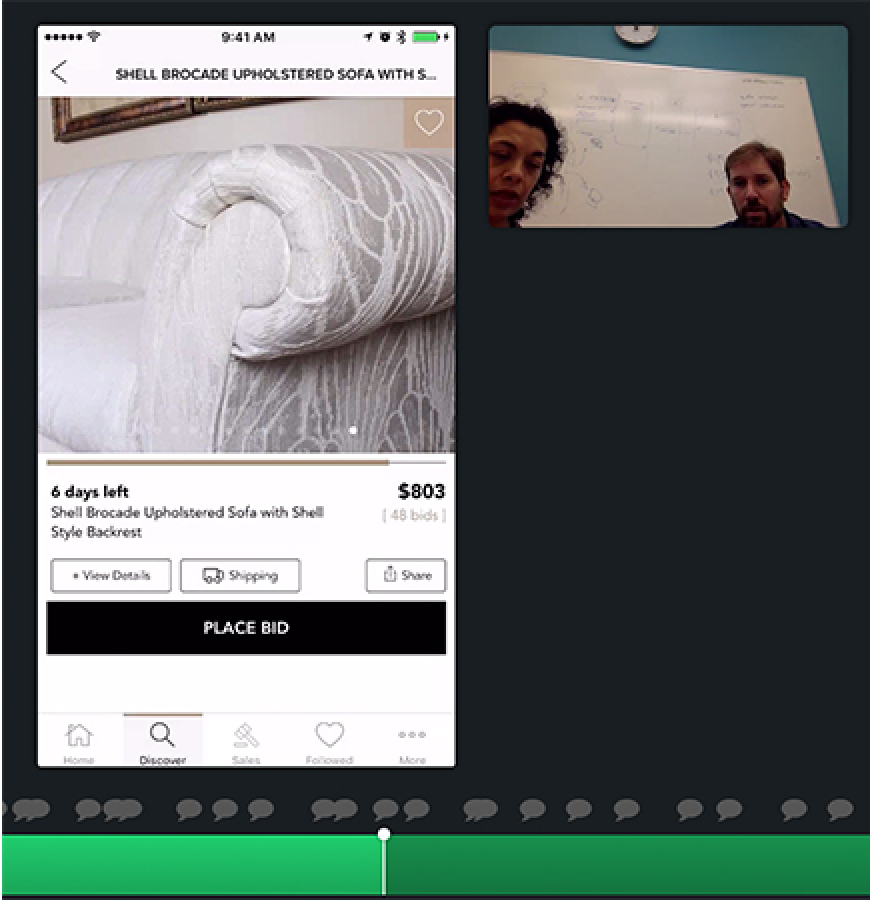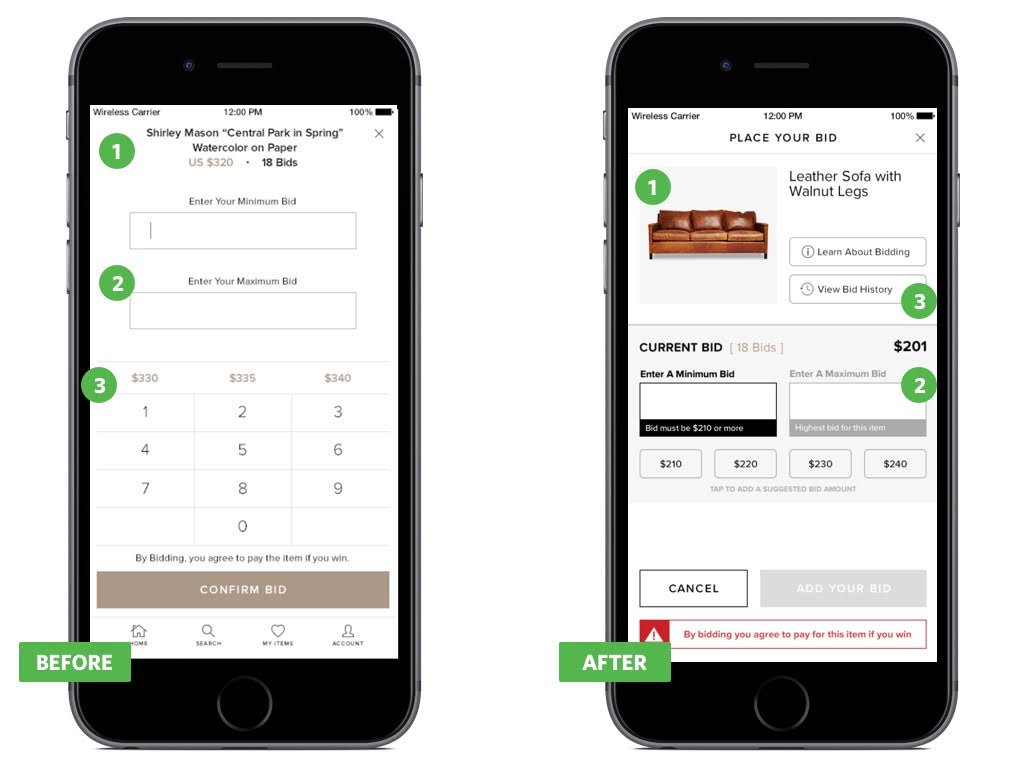RESEARCH + STRATEGY
ONLINE ESTATE SALE
or how I used usability testing to introduce more diversity of thought into the design process
Client
Consumer Products
Duration
2 weeks
Interface
Responsive Web
ABOUT THE PROJECT
An online estate sale auctioneer was weeks away from launching its redesigned iOS app. Despite the expertise of very smart designers and developers, there was no guarantee that their ideas would survive first contact with their customer. To identify and mitigate any issues prior to launch, I was brought on to conduct a series of moderated usability tests for the mobile app and provide recommendations for how to improve the experience.
OTHER CONSTRAINTS AND CONSIDERATIONS
UNDER REPRESENTATION
None of the designers or developers on the team were considered the target users
QUICK FIXES ONLY
A nearly finished app meant we only had the resources (and political will) for small changes
MY ROLE
As the lead researcher, I was responsible for preparing the test, conducting the sessions, analyzing the collect data, and presenting findings to the leadership team
KEY ACTIVITIES
- RESEARCH 25%
- DATA SYNTHESIS 65%
- STAKEHOLDER PRESENTATIONS 10%
MY APPROACH
We decided to exclusively recruit women to participant in a series of moderated (mobile) usability tests. My reasoning was two-fold. First, I wanted to gathered feedback from the app’s likely user base. Second, I wanted to encourage diversity of thought on what had, thus far, been an all-male design point of view.
BY THE NUMBERS
Focus Group
Responsive Wireframes
Design Sprints
USER RESEARCH
MODERATED USABILITY TESTS
I planned and conducted 10 usability tests of the mobile app with our target users: middle-aged women who frequent estate sales. Tests were performed in a makeshift lab using Lookback.io for screen-sharing and recording purposes. We watched them find an item and participate in a virtual auction. However, it was in the introductory interview where we learned more about the attitudes and behaviors that illuminated the WHY behind what we observed.
DESIGN
QUALITATIVE DATA CODING
I built a spreadsheet that included over 250 quotes or “data point” from the interviews. Just as you might organized post-it notes into affinity clusters to identify themes, I review and tagged the data to uncover key themes and design guidance for the team
DESIGN
ANNOTATED VIDEOS
As part of data analysis, we reviewed and annotated recordings of the tests which in in turn became valuable artifacts in and of themselves. For instance, our recommendations included a link to a video with supporting evidence so that stakeholder could observe user issues firsthand and from the source. A ten-second clip of some colorful user language is worth 10x more than me in front of the room delivering a polished report.
Screenshot: Test Session Recording (via Lookback.io)
DESIGN RECOMMENDATIONS
DESIGN RECOMMENDATIONS
HOW THE GAME IS PLAYED
Auctioneering is game; the winner knows how many others are playing and what cards they are holding. Participants struggled to find analogous information about an auction, including (1) confirmation of what they’re bidding on; A bid history and current winner, and the total cost when bidding
DESIGN RECOMMENDATIONS
BIDDING ON THE GO
The asynchronous bidding in online auction forces participants to pay close attention to when things change. Participants described being out and about and checking in quickly to see if they still have the highest bid throughout the day. This context of use was not widely considered or adequately addressed in the app. We suggested ways to level the playing field such that that the occasional bidder in line at the grocery store is not be at a disadvantage relative to the professional one at home watching three screens.
DESIGN RECOMMENDATIONS
EXPOSE HIDDEN COSTS
Location helps bidders determines shipping costs or whether they can pick up the item themselves. It also affords bidders the opportunity to personally inspect an item before purchasing it. Do not make location information as hard to find as it currently is. Better still, we recommended that total costs (shipping + bids) be given more prominence on the product detail and bidding pages

